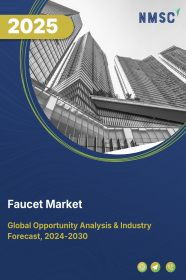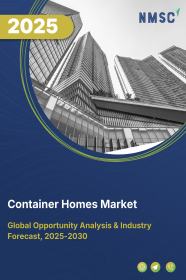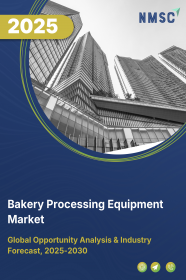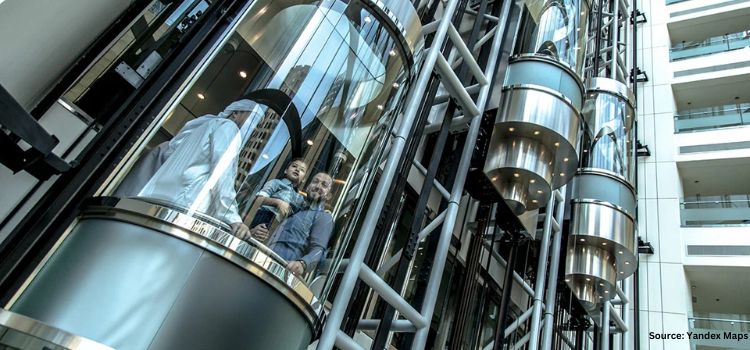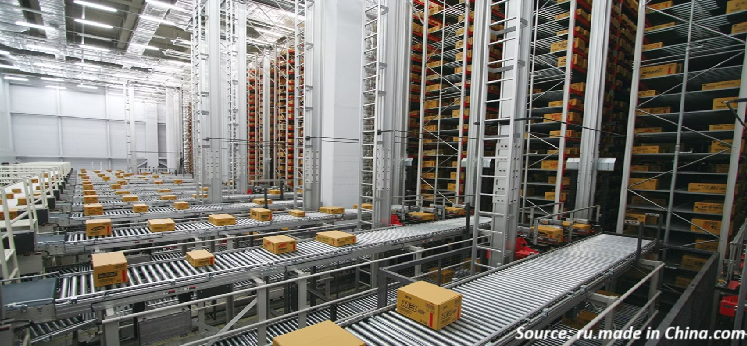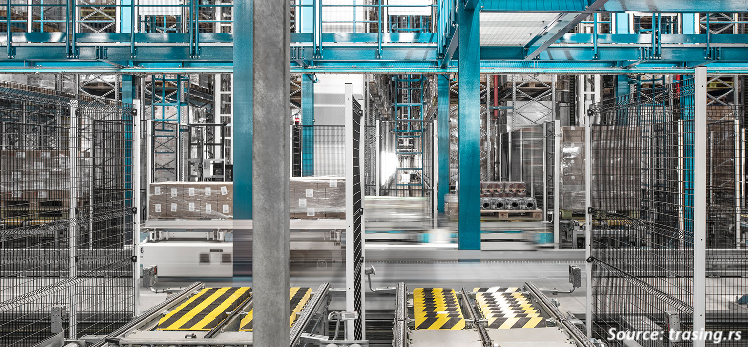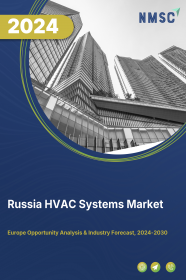
Russia HVAC Systems Market by Equipment (Cooling Equipment, Heating Equipment, and Ventilation), by Implementation Type (New Construction and Retrofit), and by End User (Residential, Commercial, and Industrial) - Opportunity Analysis and Industry Forecast, 2024– 2030
Industry: Construction & Manufacturing | Publish Date: 20-Nov-2024 | No of Pages: 118 | No. of Tables: 73 | No. of Figures: 38 | Format: PDF | Report Code : CM1941
US Tariff Impact on Russia HVAC Systems Market
Trump Tariffs Are Reshaping Global Business
Market Definition
The Russia HVAC System Market size was valued at USD 3.99 billion in 2023, and is predicted to reach USD 5.12 billion by 2030, at a CAGR of 3.0% from 2024 to 2030.
HVAC (Heating, Ventilation, and Air Conditioning) refers to the technology and systems used in buildings to regulate indoor environmental conditions such as temperature, humidity, and air quality to ensure comfort and safety for occupants. Heating systems provide warmth during colder months, ventilation systems circulate and replenish indoor air, and air conditioning systems cool and dehumidify indoor air during warmer months.
HVAC systems offer several advantages, including improved occupant comfort and health, increased energy efficiency leading to cost savings, better indoor air quality through filtration and ventilation, precise temperature control for enhanced productivity in commercial settings, and protection of building infrastructure from extreme weather conditions. Additionally, these systems can be designed to meet specific requirements, contributing to sustainability goals by reducing carbon emissions and promoting eco-friendly practices in building operations.
Environmental Concerns Drive Growth in the HVAC Systems Industry
Environmental considerations are integral to the growth trajectory of the HVAC systems sector. Heightened awareness regarding climate change, air quality, and ozone layer depletion has intensified the call for sustainable practices and regulatory measures. Governments worldwide are imposing directives to curb the environmental impact of HVAC systems, prompting manufacturers to invest in eco-friendly solutions and comply with stringent standards.
The HVAC systems industry is experiencing significant growth driven by environmental imperatives. With increasing concerns about climate change, air quality, and ozone layer depletion, there is a growing emphasis on sustainable practices and regulatory compliance. Governments worldwide are implementing policies to reduce the environmental impact of HVAC systems, leading to the development and adoption of eco-friendly technologies.
Rising Urbanization and Construction Trends Propels the Market Expansion
Urbanization and construction trends emerge as pivotal growth drivers within the HVAC industry. The burgeoning urban population necessitates an increased demand for HVAC systems across diverse structures, including residential, commercial, and industrial establishments such as apartments, office complexes, shopping centers, and factories.
Simultaneously, there is a discernible shift in construction methodologies towards sustainability and energy efficiency, propelled by green building initiatives mandated by governments and driven by environmental concerns. These initiatives mandate stringent HVAC standards in new constructions, thereby fostering a market for eco-friendly solutions.
Furthermore, the trend towards renovating and retrofitting existing buildings amplifies the need for HVAC upgrades, aligning with contemporary energy-saving technologies. The integration of HVAC systems with building automation and smart technology further elevates building performance and energy efficiency, underscoring the pivotal role played by urbanization and construction trends in driving the growth trajectory of the HVAC industry.
Price Volatility of Raw Materials Restrains the Growth of the HVAC system Market
The augmentation of raw material costs, spurred by inflation and supply chain disruptions, detrimentally affects the manufacturing expenses associated with HVAC systems. The upsurge in expenditures for pivotal raw materials such as steel, copper, and aluminum significantly amplify production costs for HVAC manufacturers.
Consequently, smaller and mid-sized HVAC entities experience margin pressures, adversely impacting their profitability and hindering investments in research and development endeavors. This acts as a barrier to the market's growth trajectory.
Integration of Solar-Powered HVAC Systems Creates Opportunity Growth for the Market
Solar-powered HVAC systems, leveraging photovoltaic technology for heating, ventilation, and air conditioning operations, represent an auspicious pathway for market expansion in the HVAC sector. By deploying these systems, equipped with solar panels atop rooftops or designated areas, users can markedly diminish reliance on grid electricity, thereby achieving notable energy cost reductions.
With continuous enhancements in solar panel efficiency, energy storage capabilities, and system integration techniques, the feasibility and economic viability of solar-powered HVAC solutions are steadily increasing. Furthermore, these systems not only curtail carbon emissions but also endorse sustainability, aligning seamlessly with escalating environmental apprehensions and regulatory frameworks worldwide.
Consequently, the escalating demand for energy-efficient and eco-friendly alternatives among businesses and homeowners underscores the compelling potential for market growth through the widespread adoption of solar-powered HVAC systems, catalyzing innovation and investment in renewable energy technologies across the HVAC industry.
Competitive Landscape
The market players operating in the Russia are LG Electronics, Vybos, Rover Air, Refrion, AIREDALE INTERNATIONAL AIR CONDITIONING LTD., Era Group, SovPlym, Venteco LLC, PM Vent, Guangzhou SPRSUN New Energy Technology Development Co., Ltd.
and others.
Russia HVAC System Market Key Segments
By Equipment
-
Cooling Equipment
-
Unitary Air Conditioners
-
Variable Refrigerant Flow Systems (VRF)
-
Chillers
-
Room Air Conditioners
-
Coolers
-
Cooling Towers
-
-
Heating Equipment
-
Heat Pumps
-
Furnaces
-
Unitary Heaters
-
Boilers
-
-
Ventilation
-
Air-handling Units (AHUs)
-
Air Filtration Systems
-
Ventilation Fans
-
HRVs & ERVs
-
Air Purification Systems
-
Others
-
By Implementation Type
-
New Construction
-
Retrofit
By End User
-
Residential
-
Commercial
-
Industrial
REPORT SCOPE AND SEGMENTATION:
|
Parameters |
Details |
|
Market Size in 2023 |
USD 3.99 Billion |
|
Revenue Forecast in 2030 |
USD 5.12 Billion |
|
Growth Rate |
CAGR of 3.0% from 2024 to 2030 |
|
Analysis Period |
2023–2030 |
|
Base Year Considered |
2023 |
|
Forecast Period |
2024–2030 |
|
Market Size Estimation |
Billion (USD) |
|
Growth Factors |
|
|
Companies Profiled |
10 |
|
Market Share |
Available for 10 companies |
|
Customization Scope |
Free customization (equivalent up to 80 working hours of analysts) after purchase. Addition or alteration to country, regional, and segment scope. |
|
Pricing and Purchase Options |
Avail customized purchase options to meet your exact research needs. |
KEY PLAYERS
-
LG Electronics
-
Vybos
-
Rover Air
-
Refrion
-
AIREDALE INTERNATIONAL AIR CONDITIONING LTD.
-
Era Group
-
SovPlym
-
Venteco LLC
-
PM Vent
-
Guangzhou SPRSUN New Energy Technology Development Co., Ltd.

















 Speak to Our Analyst
Speak to Our Analyst



